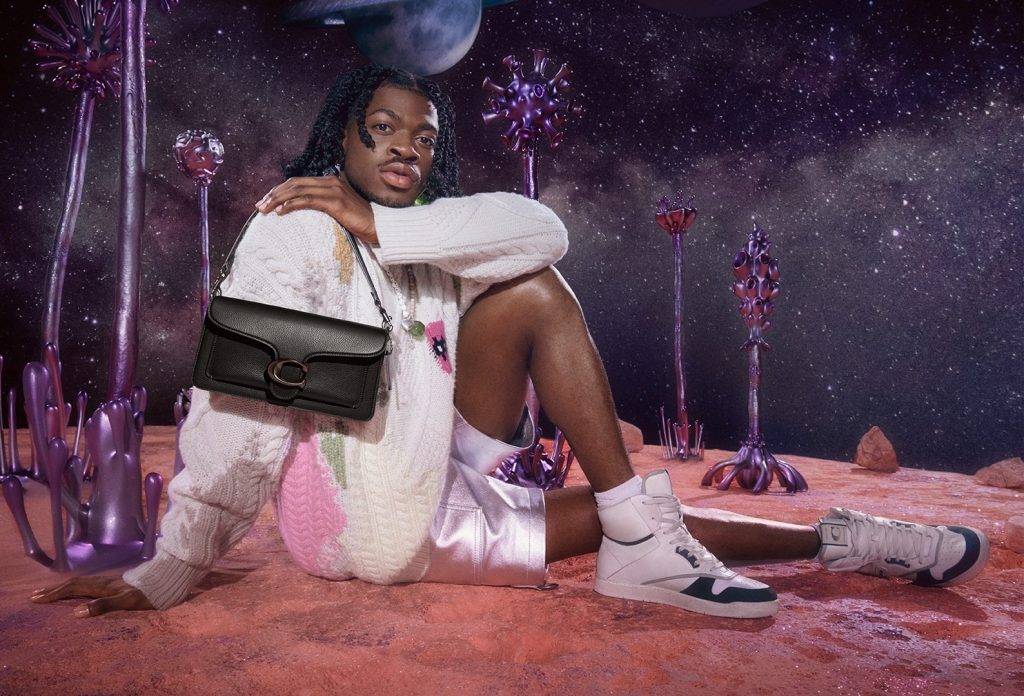Alright, let’s get to the bottom of how Coach turned the tables with its Tabby bag and basically schooled everyone on winning over Gen-Z. It’s like they had a secret map to the treasure chest that is the hearts (and wallets) of the most elusive shoppers out there.

1. Tapping into the Gen-Z Audience
Coach successfully identifying a unique segment within Gen-Z and relentlessly pursued them: the timeless shopper. This wasn’t a lucky guess; it was the result of diving deep into consumer data, understanding their demographics and the nuances of this generation’s values and preferences. Through customer insight surveys and shop-a-longs, Coach was able to identify the exact ethnographics of a Gen-Z audience to target in their product and marketing.
The lesson here?
Your most valuable audience might not be the loudest or the most visible. By employing thorough research and data analytics, you can discover a niche that aligns perfectly with your offering. In Coach’s case it was classic style with a modern twist… which they realized is exactly what Gen-Z was looking for when marketed properly.
2. Transforming Brand Perception
Facing an image crisis as being seen as outdated, Coach didn’t just revamp; it reinvented.
This transformation was fueled by genuine conversations with the target market. Coach listened, learned, and then quickly leaped into action. This approach underscores the importance of dialogue with and truly understanding your target audience.
Real change comes from understanding the gap between how you see your brand and how your customers see it. Adjusting your brand’s narrative to align with the evolving tastes of a younger audience can rejuvenate its appeal.
At the same time, Coach began thinking about which celebrities and marketing messages to pair together to reach this identified audience in a way that gets them to take immediate action.
This is where working with Lil Nas X and their campaign slogan “Courage To Be Real” (believe in confident self-expression) really took off.
They also had a campaign called “Wear Your Shine” with Dove Cameron, Lil Buck and Youngji Li.

Lastly, Coach had a collaboration with Jennifer Lopez for their Hutton Shoulder Bag as part of “Courage To Be Real” campaign which also resonated with the Gen-Z audience.

3. Data as the North Star
When Coach noticed the Tabby Bag’s magnetic pull on young shoppers, it wasn’t by accident. It was data analytics that highlighted the Tabby’s potential as a gateway to not just a purchase but a lifelong customer relationship. This insight shifted Coach’s strategy towards creating more iterations of the Tabby, catering to diverse tastes and budgets.
This data came mostly from shop-a-longs and retail insights.
The takeaway is clear: Let data drive your product development. It can reveal unexpected heroes in your lineup and guide your innovation for maximum impact.
4. Crafting Resonant Campaigns
Coach’s marketing strategies hit home by striking at the core of Gen-Z’s aspirations – authenticity and confidence.
Through campaigns that celebrated individuality, Coach made the Tabby Bag a symbol of self-expression. This success story teaches us the power of message resonance.

Understanding and tapping into your audience’s deeper emotional needs and values can turn a campaign into a cultural statement.
5. The Art of Continuous Evolution
Never resting on its laurels, Coach kept refining the Tabby, responding to feedback, and adjusting its strategy. This iterative approach kept the product fresh and relevant. It’s a reminder that in today’s fast-paced market, complacency can be your downfall.
Continuous improvement, based on real-time feedback and ongoing data analysis, keeps you ahead of the curve.
6. Embedding Data from the Get-go
Coach’s strategy involved integrating data insights from the very beginning of the product development process. This ensured decisions were informed and aligned with consumer trends and preferences.
For brands looking to replicate Coach’s success, the message is to build a data-informed culture. Make data a key player in your strategy meetings, not an afterthought.
7. Balancing Creativity and Analytics
Perhaps the most nuanced aspect of Coach’s strategy was its balance between creative intuition and data-driven decisions. The Tabby Bag’s success story is as much about artistic design as it is about analytics.
Embracing this balance can empower brands to innovate boldly, backed by the confidence that their creative risks are informed by solid data.
Conclusion
Coach’s journey with the Tabby Bag is a compelling case study on the intersection of data, design, and consumer insight. It illustrates that understanding your audience, staying adaptive, and leveraging data can transform not just a product but an entire brand’s trajectory.
For those looking to make a splash in the world of fashion or any consumer-driven market, Coach’s playbook offers valuable lessons:
- know your audience deeply
- engage authentically
- create campaigns with emotional messaging that resonates with your audience
- give them something aspirational
- use data not just to validate your choices, but to inspire them.
Recent Comments